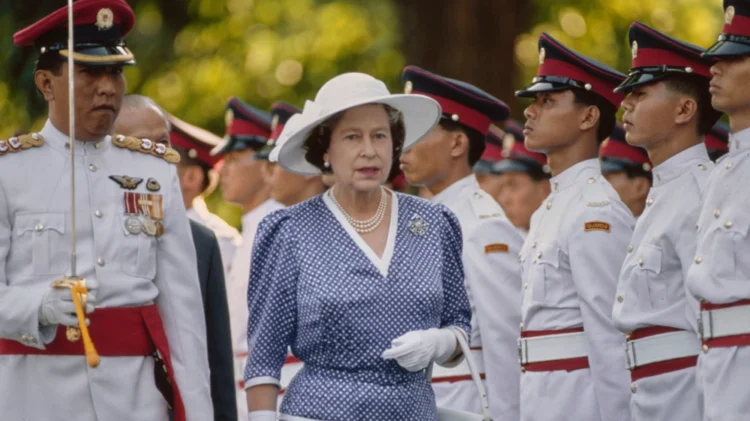
by Antonella Benedetto
The Queen of records
Queen Elizabeth II of Britain passed away on Thursday at 96 years old. She was the oldest British monarch in history and ruled the country for 70 and 214 days. Not only was she the second-longest reigning monarch in history (after French King Louis XIV, who ruled for more than 72 years before passing away in 1715), but also the richest. Elizabeth is known to billions of people as the leader of the Commonwealth, a group of 56 nations mainly including former colonies, such as Singapore, Malaysia, India, and Sri Lanka. Moreover, she may be “seen” every day not only on the British currency, but also on the currency of more than 30 other nations. She was well-known around the world, including in Asia. From Singapore’s PM Lee to New Zealand’s PM Ardern, and Japan’s PM Kishida, world leaders praised the monarch for her long-lasting reign. According to Indian Prime Minister Narendra Modi, “she provided inspiring leadership to her nation and people. She personified dignity and decency in public life”.
Queen Elizabeth and Asia: a controversial relationship
When Queen Elizabeth II inherited the throne in 1952, the British Empire had just lost India, known as the “Jewel in the Crown”; the subcontinent was still suffering from the violence of the partition that had resulted in the foundation of Pakistan in 1947. Ayesha Jalal, a history professor at Tufts University, said that despite the painful legacy of colonialism in South Asia, it is “amazing” that the Queen “was not a controversial figure in the otherwise fairly dense annals of South Asian anti-colonial nationalism”, since the reign of Queen Elizabeth coincided with a period of declining British power in South Asia.
Queen Elizabeth II adopted the policy of “non interference” in South Asia during her 70-year reign. That’s why India and Pakistan maintained friendly ties with her. Many adults still remember with happiness the visit of the Queen at that time, particularly her innate connection with all people and her capacity to make others feel at home. Throughout her 70-year reign, she made three visits to India and two to Pakistan. However, controversies exist.
If someone appreciates that Elizabeth avoided participating in conflicts between Pakistan and India, the Pakistani historian Abbas criticizes the fact that she never settled the India-Pakistan issue over Kashmir. For instance, she could have contributed to the expansion of Pakistan’s parliamentary system of government; moreover, she may have intervened in 1953 when Khawaja Nazimuddin was fired as prime minister by Ghulam Muhammad, Pakistan’s governor-general. However, Indian author Rana Safvi argued that showing empathy for Queen Elizabeth II’s passing does not justify past colonialism. Because of colonial actions, India is still suffering.
On the contrary, Asif Nazrul, a lecturer at Dhaka University in Bangladesh, acknowledging the colonial heritage, stated that “despite the colonial legacy, many people in Bangladesh are sad. We can’t live in the past forever. Queen Elizabeth’s calm, soothing, and accommodating image eventually prevailed in the last few decades.”
A neutral position was adopted by the political commentator Saimum Parvez from Dhaka, who dismissed the significance of the Queen’s passing for the people of South Asia. He believes that their lives are unaffected by the Queen’s social and political death. The government of Bangladesh has declared an unneeded but expected three-day national mourning period.
A traveling Queen
Elizabeth II met or hosted several national leaders in Asia, including the Emperor of Japan, Suharto of Indonesia, King Bhumibol Adulyadej of Thailand, Lee Kuan Yew of Singapore, and Xi Jinping of China. She also traveled to many Asian nations, including Bangladesh (1983), Malaysia, Singapore, and Brunei (1972), India and Pakistan (1961), the Maldives and Sri Lanka (1954) barely two years after she ascended to the throne following the death of her father George VI. She also regularly visited the Commonwealth’s remote Pacific Island countries, such as Fiji, Nauru, Papua New Guinea, the Solomon Islands, Kiribati, and Samoa. She, finally, was hosted by Nepal, Thailand, Indonesia, Japan, China, and South Korea.
Queen Elizabeth and China
Following her death, Chinese officials and citizens joined millions of others across the world in paying respect to the Queen. On Friday, the royal family and the people of Britain received condolence messages from Chinese President Xi Jinping and Premier Li Keqiang. Her death was described as “a tremendous loss to the British people” by Xi. In October 1986, Queen Elizabeth and her husband, Prince Philip, made history by becoming the first heads of state from the United Kingdom to visit the Chinese mainland. The pair visited six towns, saw the then-Chinese leader Deng Xiaoping, and took photographs at the Great Wall in Beijing and the well-known terra-cotta warriors at Xi’an in the northwest. Two years before, the tumultuous meeting between Margaret Thatcher and Zhao Ziyang marked the signing of the Sino-British Joint Declaration. As a result of the agreement, after more than 150 years of colonial rule, Hong Kong was handed over to China in 1997.
The Queen’s last travel to Asia
As the leader of the British Commonwealth, Queen Elizabeth last traveled to Asia in 2006, when President S.R. Nathan welcomed her in Singapore (she made two other visits to Singapore, respectively, in 1972 and 1989). She went to a military cemetery and the local community with Prince Philip. The same as when she initially visited the newly formed city-state in 1972, she traveled to a public housing complex in Toa Payoh.
